
Climate change is a pressing issue that is not only affecting our environment, but also the industries and activities we enjoy. One of the major areas that has been significantly impacted by this phenomenon is tourism. From beach destinations to winter wonderlands, climate change is having a profound effect on the way we travel and experience the world. In this blog post, we will explore the ways in which climate change affects tourism and how it is changing the way we plan and enjoy our vacations.
The Realities of Climate Change: A Brief Overview
Climate change is a stark reality that we cannot afford to ignore. It refers to the long-term alteration in temperature and typical weather patterns, caused primarily by human activities such as burning fossil fuels and deforestation. The consequences of climate change are wide-ranging and profound, impacting various sectors of our society, including the tourism industry.
The first reality of climate change is the increase in extreme weather events. Heat waves, hurricanes, and intense rainfall are becoming more frequent and severe, putting tourists and popular destinations at risk. Rising temperatures are melting glaciers and causing sea levels to rise, threatening coastal cities and beach destinations.
Another reality is the loss of biodiversity. Climate change is leading to the extinction of numerous plant and animal species, which not only disrupts ecosystems but also impacts the popularity of ecotourism destinations. Furthermore, shifts in precipitation patterns are affecting agricultural practices, potentially causing food shortages in some areas.
Climate change also poses challenges for winter sports tourism. As snowlines recede, ski resorts are forced to rely on artificial snow-making, which is not only expensive but also environmentally unsustainable.
It is crucial to understand these realities and their impact on tourism in order to effectively address climate change and mitigate its effects. In the next sections, we will delve deeper into the specific impacts on iconic tourist destinations, rising sea levels, disappearing tropical paradises, receding snowlines, and the opportunities for sustainable travel and eco-tourism.
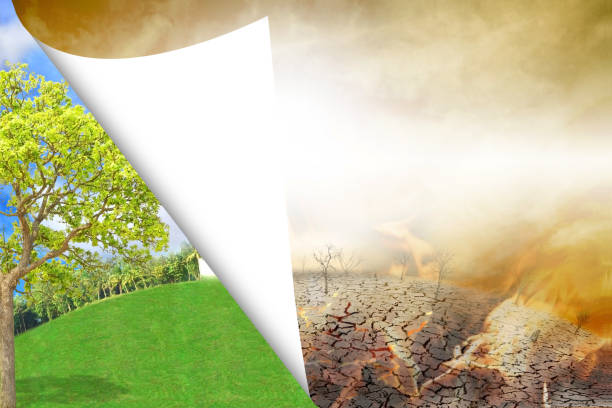
Unpacking the Impact of Climate Change on Iconic Tourist Destinations
Iconic tourist destinations around the world are being drastically affected by climate change. The once picture-perfect landscapes and breathtaking sights are now under threat, and the impact is undeniable. Let’s unpack how climate change is shaping the future of these iconic destinations.
One major concern is the increased risk of extreme weather events. Hurricanes, floods, and heat waves are becoming more frequent and severe, posing a threat to both tourists and the destinations themselves. Historic cities, ancient ruins, and popular coastal towns are now at risk of being damaged or even destroyed.
Rising sea levels are also a pressing issue. Coastal cities and beach destinations are facing the threat of erosion, flooding, and loss of infrastructure. Some of the most famous and beloved beaches in the world could soon disappear due to coastal erosion caused by climate change.
Another significant impact is the loss of biodiversity. Iconic tourist destinations often boast unique and diverse ecosystems, home to a wide range of plant and animal species. However, climate change is leading to the extinction of many of these species, disrupting the delicate balance of these ecosystems and diminishing their appeal as tourist attractions.
In addition, the loss of snow-covered landscapes is a growing concern. The receding snowlines in mountainous regions are threatening winter sports tourism. Ski resorts are having to rely on artificial snow-making, which not only comes at a high cost but also contributes to the environmental degradation caused by climate change.
These impacts on iconic tourist destinations are alarming, but there is hope. By acknowledging the reality of climate change and taking steps towards sustainability and conservation, we can help mitigate these effects and preserve these treasures for future generations.
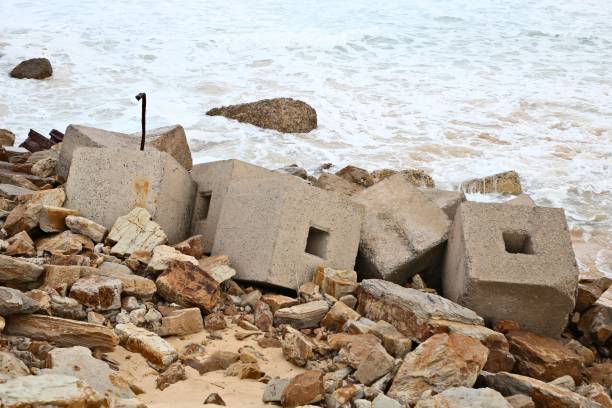
Rising Sea Levels and the Disappearance of Tropical Paradise
The rising sea levels caused by climate change are posing a significant threat to tropical paradises around the world. These idyllic beach destinations, with their crystal-clear waters and pristine white sands, are slowly but surely disappearing due to the effects of climate change. As sea levels continue to rise, the erosion of coastlines becomes more pronounced, leaving these once vibrant and popular tourist hotspots in a vulnerable position.
The disappearance of these tropical paradises is not just a loss for beachgoers and vacationers looking for the perfect spot to unwind. It is also a blow to the local communities and economies that depend on tourism as their main source of income. Hotels, resorts, and local businesses that rely on the influx of visitors are feeling the effects as their livelihoods are threatened by the encroaching sea.
The loss of these tropical paradises also has significant environmental consequences. The unique ecosystems that thrive in these areas, including coral reefs and mangrove forests, are being destroyed as the sea levels rise. The disappearance of these habitats has a devastating impact on marine life and the overall biodiversity of the region.
While the disappearance of these tropical paradises is undoubtedly disheartening, there is still hope. By taking action to combat climate change and reduce our carbon footprint, we can help slow down the rising sea levels and protect these fragile ecosystems. Additionally, supporting sustainable tourism practices and responsible travel can make a significant difference in preserving these beautiful destinations for future generations to enjoy. It is up to us to act now and save our tropical paradises from disappearing beneath the rising tides.
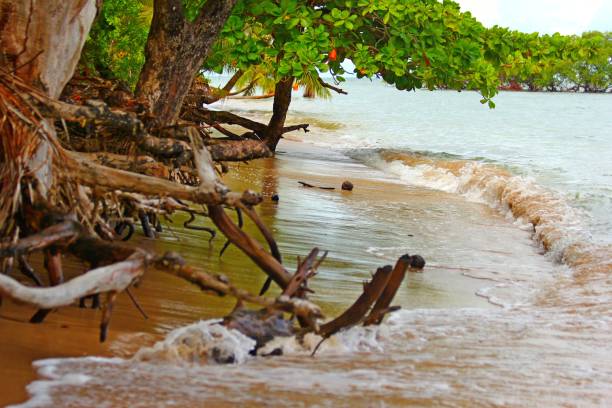
Receding Snowlines and the Future of Winter Sports Tourism
Winter sports enthusiasts may have to start adjusting their plans as climate change takes a toll on snow-covered landscapes. The receding snowlines in mountainous regions are threatening the future of winter sports tourism. Ski resorts, once reliant on natural snowfall, are now forced to turn to artificial snow-making to keep their slopes covered. This not only comes at a high cost but also contributes to the environmental degradation caused by climate change.
The impact of receding snowlines goes beyond the inconvenience for ski resorts. It affects the entire winter sports industry, including businesses that rely on the influx of visitors during the snowy season. Hotels, restaurants, equipment rental shops, and even local communities suffer as winter tourism declines.
Moreover, the loss of natural snow cover also diminishes the overall experience for winter sports enthusiasts. The thrill of skiing or snowboarding on fresh, powdery snow may become a rare occurrence, as resorts struggle to maintain suitable conditions.
However, despite these challenges, there is still hope for the future of winter sports tourism. Resorts can focus on implementing sustainable practices and reducing their carbon footprint. They can invest in renewable energy sources, improve energy efficiency, and promote responsible travel options for visitors. By adapting to the new normal and embracing sustainability, the winter sports industry can continue to thrive in a changing climate.
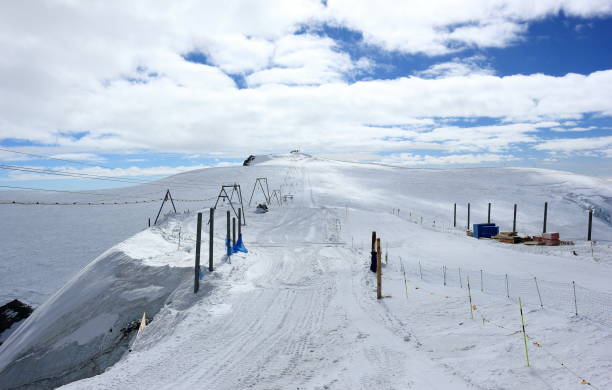
Biodiversity Loss: A Blow to Wildlife and Ecotourism
As we delve deeper into the impact of climate change on tourism, it’s important to recognize the devastating blow it deals to wildlife and ecotourism. Biodiversity loss is a harsh reality of climate change, with numerous plant and animal species facing extinction. This loss not only disrupts ecosystems but also has a profound impact on the popularity of ecotourism destinations.
Imagine trekking through a lush rainforest, hoping to catch a glimpse of rare and exotic wildlife. Unfortunately, due to climate change, these opportunities may become increasingly rare. Habitats are being destroyed, and species are disappearing at an alarming rate. This not only threatens the delicate balance of ecosystems but also diminishes the allure of these destinations for nature lovers and wildlife enthusiasts.
Ecotourism, which aims to promote conservation and sustainable travel, relies on the existence of diverse and thriving ecosystems. When these ecosystems are disrupted or destroyed, the potential for ecotourism diminishes. Tourists may lose interest in visiting destinations where the unique flora and fauna they once marveled at no longer exist.
The blow to wildlife and ecotourism caused by biodiversity loss is disheartening. However, it also serves as a wake-up call for us to take action. By supporting conservation efforts, practicing responsible tourism, and advocating for sustainable practices, we can help mitigate the impacts of climate change on biodiversity. Together, we can work towards preserving our natural heritage and ensuring that future generations can continue to experience the wonders of our planet’s wildlife.
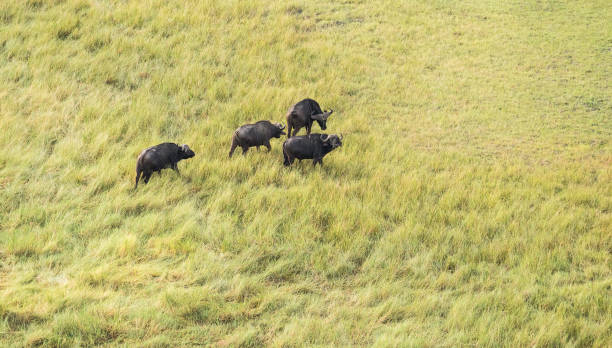
The Silver Lining: Sustainable Travel and Eco-Tourism Opportunities in a Changing Climate
While the impacts of climate change on tourism may seem daunting, there is a silver lining amidst the challenges. Sustainable travel and eco-tourism present unique opportunities to not only mitigate the effects of climate change but also promote responsible and conscious tourism.
Sustainable travel involves making environmentally friendly choices when planning and enjoying your vacations. This can include opting for eco-friendly accommodations that prioritize energy efficiency and minimize waste. Choosing transportation methods with lower carbon emissions, such as taking trains or buses instead of flying, can also make a significant difference.
Eco-tourism, on the other hand, focuses on experiencing and supporting destinations that prioritize conservation and promote the well-being of local communities. By participating in activities such as wildlife conservation projects, sustainable farming practices, or cultural exchanges, tourists can actively contribute to the preservation of fragile ecosystems and help local economies thrive.
These opportunities not only allow us to have a positive impact on the environment but also provide us with unique and fulfilling travel experiences. By immersing ourselves in local cultures, engaging in conservation efforts, and supporting sustainable initiatives, we can make a meaningful difference while enjoying our vacations.
The future of tourism lies in our ability to adapt and embrace sustainable travel and eco-tourism. Together, we can ensure that the beauty and wonder of our world are preserved for generations to come. So, let’s seize the silver lining and make every trip an opportunity to create a positive impact on the planet.

Adapting to the New Normal: What Tourists Can Do
As tourists, we have a responsibility to adapt to the new normal of climate change and make conscious choices to minimize our impact on the environment. Here are some practical steps that we can take to make a difference:
- Choose eco-friendly accommodations: Look for hotels and resorts that prioritize sustainability and have green initiatives in place. This could include using renewable energy sources, reducing water consumption, and implementing recycling programs. By supporting these establishments, you are sending a message that eco-friendly practices are important to you.
- Use alternative transportation: Consider taking trains, buses, or even cycling instead of flying whenever possible. Air travel contributes significantly to carbon emissions, so opting for alternative modes of transportation can help reduce your carbon footprint.
- Support local businesses and communities: When you travel, make an effort to support local businesses and communities. This can involve eating at local restaurants, purchasing souvenirs from local artisans, and participating in cultural activities. By doing so, you contribute directly to the local economy and help create sustainable livelihoods.
- Reduce waste: Practice responsible waste management by reducing, reusing, and recycling. Avoid single-use plastic items and carry a reusable water bottle, shopping bag, and utensils with you. Dispose of waste properly and look for recycling facilities or programs in your destination.
- Educate yourself: Learn about the local environment and culture of the places you visit. Understanding the challenges they face due to climate change can help you make informed choices and engage in responsible tourism practices.

By implementing these strategies, we can become more conscious travelers and actively contribute to mitigating the impacts of climate change. Let’s embrace the new normal and make a positive difference wherever we go.



